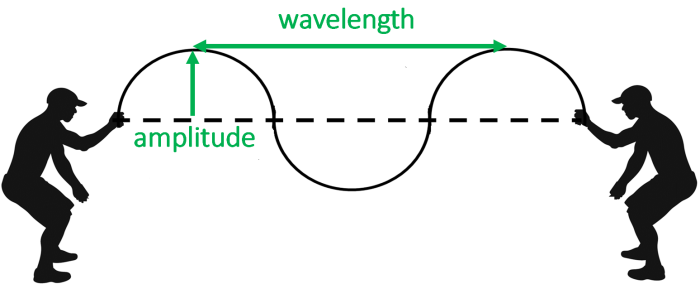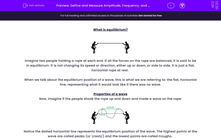What is equilibrium?

Imagine two people holding a rope at each end. If all the forces on the rope are balanced, it is said to be in equilibrium. It is not changing its speed or direction, either up or down, or side to side. It is just a flat, horizontal rope at rest.
When we talk about the equilibrium position of a wave, this is what we are referring to: the flat, horizontal line, representing what it would look like if there was no wave.
Properties of a wave
Now, imagine if the people shook the rope up and down and made a wave on the rope:

Notice the dotted horizontal line represents the equilibrium position of the wave. The highest points of the wave are called peaks (or 'crests') and the lowest points are called troughs.
Two properties of the wave have been labelled. The amplitude is the maximum displacement from equilibrium. You can think of it as the 'height' of the wave. It must be measured vertically from the central resting position, not from the peak to the trough.
The wavelength is literally the length of one wave. It can be easily found by measuring the distance between two peaks.
Amplitude and wavelength are both measurements of distance, so their units are both metres.
Finally, there is a property of a wave called frequency. This is the number of waves in one second and it has the unit Hertz (Hz). For example, if the people in the diagram made 3 waves every second, the frequency would be 3 Hz. More frequency would mean more waves every second, meaning the wave would become more 'squashed', resulting in a smaller wavelength.
That's a lot to think about, so remember that you can look back at this page at any point by clicking on the red help button on the screen.
Let's have a go at some questions.









